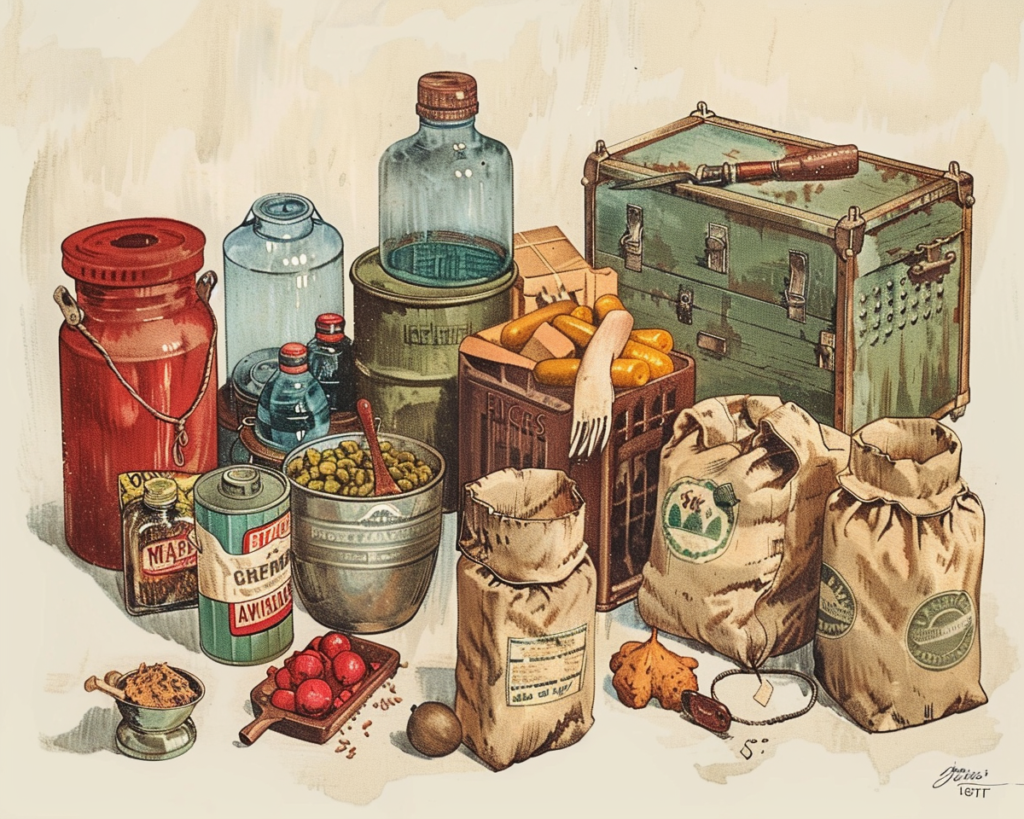The Basics of a Prepper Pantry
A prepper pantry is more than just a collection of canned goods and non-perishables. It’s a strategic reserve of essential foods designed to sustain you and your loved ones through emergencies, disruptions, or long-term crises. The primary goal of a prepper pantry is to provide a reliable source of nutrition when regular food supplies are unavailable.
Starting Small and Scaling Up
Building a prepper pantry doesn’t have to be overwhelming. Start small by creating a 3-7 day emergency food supply. Once you have this foundation, gradually expand it to cover 30 days and eventually aim for a longer-term stockpile. The key is to start now and build incrementally.
Focus on Calories and Nutrition
When stocking your prepper pantry, prioritize high-calorie, nutrient-dense foods. Aim for a balanced supply that provides around 2,000 calories per person per day. This ensures you have enough energy to manage stress and physical activity during emergencies.
Grains and Carbohydrates
Grains and carbohydrates form the backbone of any prepper pantry. They are versatile, have a long shelf life, and provide essential energy.
Importance
Grains and carbohydrates are crucial for sustaining energy levels. They are easy to store and can be used in a variety of meals, making them indispensable in a prepper’s pantry.
Examples
- Rice (white and brown)
- Pasta
- Oats
- Quinoa
- Wheat berries
- Cornmeal
Storage Tips
To extend the shelf life of grains and carbohydrates, store them in airtight containers like Mylar bags with oxygen absorbers. This helps prevent spoilage and keeps pests at bay.
Beans and Legumes
Beans and legumes are excellent sources of protein and fiber, essential for a balanced diet during emergencies.
Nutritional Benefits
Beans and legumes are packed with protein and fiber, making them a versatile and nutritious addition to your pantry. They can be used in soups, stews, and salads, providing both variety and sustenance.
Examples
- Pinto beans
- Black beans
- Chickpeas
- Lentils
- Navy beans
Storage Tips
Store beans and legumes in cool, dry places in airtight containers to maintain their quality and prolong their shelf life.
Fats and Oils
Fats and oils are essential for cooking and providing necessary fatty acids.
Importance
Fats and oils are crucial for cooking and are a source of essential fatty acids, which are vital for maintaining health.
Examples
- Olive oil
- Coconut oil
- Vegetable oil
- Lard
- Peanut butter
Storage Tips
Store fats and oils in dark, cool places to prevent rancidity and extend their shelf life.
Proteins
Proteins are fundamental for muscle maintenance and overall health, especially during high-stress situations.
Importance
Proteins are essential for maintaining muscle mass and overall health. They provide the necessary amino acids required by the body for various functions.
Examples
- Canned meats (tuna, chicken, salmon)
- Spam
- Dry-cured meats
- Nuts
- Seeds
Considerations
Include plant-based protein options like nuts and textured vegetable protein (TVP) to diversify your protein sources.
Fruits and Vegetables
Fruits and vegetables provide essential vitamins and minerals, crucial for maintaining overall health.
Nutritional Benefits
Fruits and vegetables are rich in vitamins and minerals, which are necessary for maintaining immune function and overall health during emergencies.
Examples
- Canned vegetables and fruits
- Dried fruits
- Freeze-dried options
Storage Tips
Opt for low-sodium canned options and store dried items in cool, dark places to preserve their nutritional value.
Condiments and Sweeteners
Condiments and sweeteners enhance flavor and provide variety in meals, making them a valuable addition to any prepper pantry.
Importance
Condiments and sweeteners can make otherwise bland emergency meals more palatable, boosting morale and appetite.
Examples
- Honey
- Maple syrup
- Soy sauce
- Vinegar
- Baking essentials (flour, baking powder, yeast)
Storage Tips
Keep these items in airtight containers to preserve their freshness and flavor.
Comfort Foods
Comfort foods are essential for maintaining morale during stressful times. They provide a sense of normalcy and can be a psychological boost.
Importance
During emergencies, comfort foods can provide a much-needed morale boost, helping to maintain a sense of normalcy and well-being.
Examples
- Chocolate
- Granola bars
- Jerky
- Coffee
- Tea
Storage Tips
Store comfort foods in a cool, dry place to extend their shelf life and maintain their quality.
Conclusion
In conclusion, a well-stocked prepper pantry is essential for ensuring your family’s survival and well-being during emergencies. By focusing on high-calorie, nutrient-dense foods and following proper storage practices, you can build a robust food stockpile that will keep you prepared for any situation. Start small, stay organized, and continuously improve your preparedness strategies.
For more detailed information and tips on creating a prepper pantry, refer to our post “Prepper Pantry: How to Stock Your Survival Essentials for Any Crisis.”
